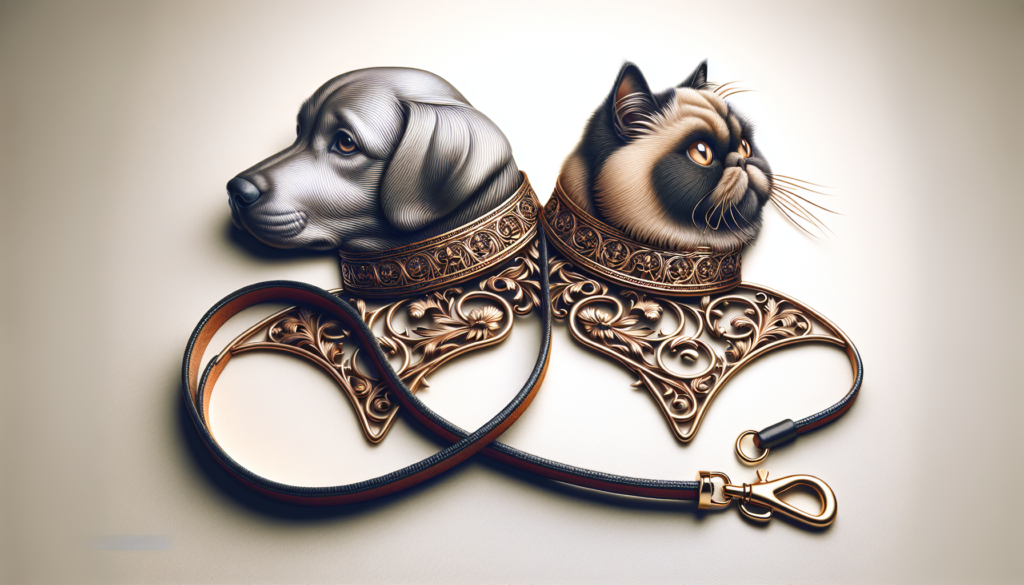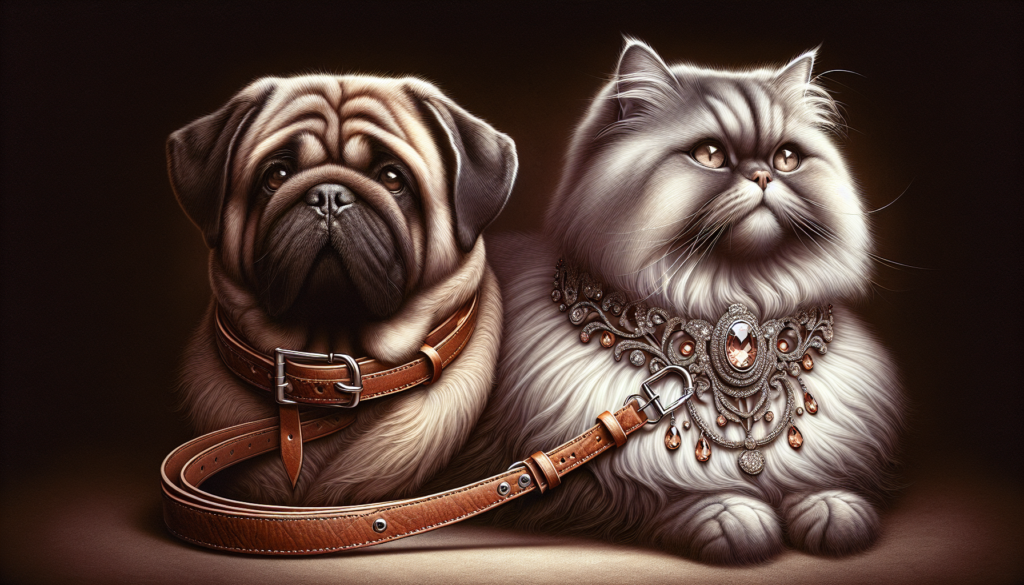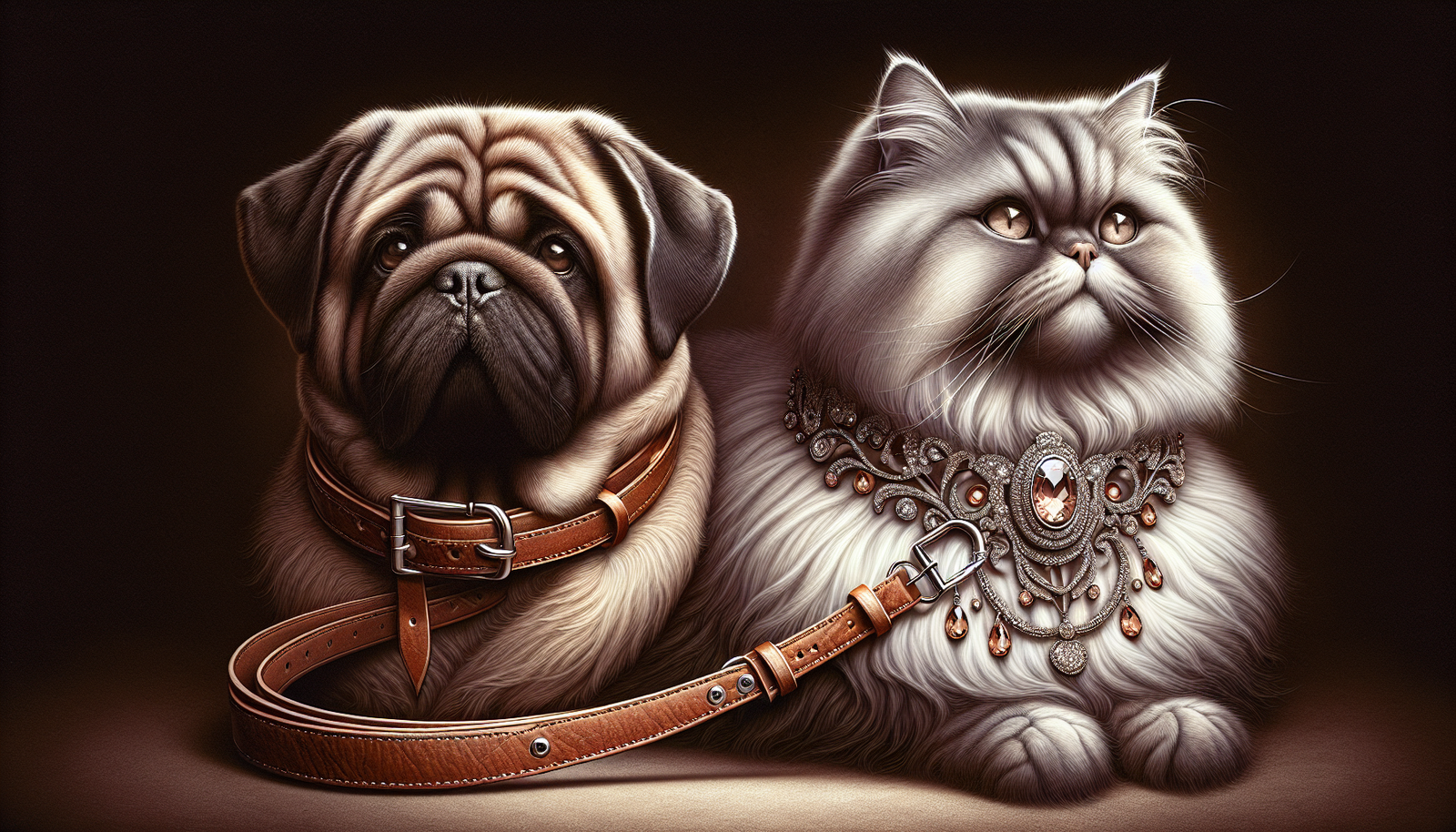If you’re a pet lover looking to introduce a new feline friend to your canine companion, you may be wondering if Persian cats and dogs can truly get along harmoniously. Persian cats are known for their luxurious coats and gentle nature, while dogs are often seen as loyal and sociable. In this article, we’ll explore the compatibility between Persian cats and dogs, sharing insights on their potential for friendship and providing tips for a successful introduction. So, if you’re eager to bring these two adorable creatures together under one roof, read on to discover the dynamic possibilities and discover if Persian cats can indeed get along with dogs.
Understanding Persian Cats
Persian cats are known for their distinct physical characteristics and gentle temperament. These beautiful felines have long, flowing coats, round faces, and expressive eyes. They are generally medium to large-sized cats, with a sturdy build and a muscular physique. Their luxurious fur requires regular grooming to keep it healthy and prevent matting.
In terms of temperament, Persian cats are often described as calm, laid-back, and affectionate. They enjoy a peaceful environment and thrive on daily routines. These cats are not typically known for their high energy levels and are content with a more relaxed lifestyle. They enjoy being pampered and showered with attention, making them great companions for those seeking a low-key pet.
Understanding Dogs
Dogs come in a wide variety of breeds, each with its own unique characteristics and temperaments. From small toy breeds to large working dogs, there is a dog out there for every individual’s lifestyle and preferences.
Different breeds have different energy levels, exercise needs, and socialization requirements. For example, herding breeds like Border Collies are known for their high energy and intelligence, while breeds like Bulldogs tend to be more laid-back and easygoing. Understanding the breed characteristics can help you find a dog that matches your lifestyle and can potentially get along with your Persian cat.

Factors Affecting Cat-Dog Relationships
When considering introducing a Persian cat to a dog, it is important to understand the factors that can influence their relationship. Here are some key factors to consider:
Early socialization
Both cats and dogs benefit from early socialization experiences. Cats that have been exposed to dogs during their critical socialization period, which is usually between 2 to 7 weeks of age, tend to be more accepting of them later in life. Similarly, dogs that have been socialized with cats from an early age are often more comfortable living with them.
Individual personalities
Just like humans, cats and dogs have their own unique personalities. Some Persian cats may be more outgoing and social, while others may be more reserved and cautious. Similarly, dogs can have varying degrees of friendliness and tolerance towards other animals. It is essential to take into account the personalities of both the cat and the dog when introducing them to each other.
Size and energy levels
The size and energy levels of both the cat and dog can impact their compatibility. A small, timid cat may feel overwhelmed by a large, energetic dog, while a hyperactive dog may not understand the need for the cat’s space and tranquility. Finding a balance in size and energy levels can help create a harmonious environment for both pets to coexist.
Introducing a Persian Cat to a Dog
Introducing a Persian cat to a dog should be done gradually and with careful consideration. Rushing the process can lead to stress and potential conflicts between the two animals. Here are some steps to follow when introducing them:
Slow and gradual process
It is essential to introduce the cat and dog slowly, allowing them to get used to each other’s presence without feeling threatened. Start by placing their bedding or toys on opposite sides of a room, allowing them to familiarize themselves with each other’s scents. Over time, gradually increase their proximity until they can interact under supervised conditions.
Providing separate spaces
Both the cat and dog should have their separate spaces where they can retreat to and feel safe. This can be a designated room or area in the house that is equipped with food, water, litter, and comfortable resting spots. Ensuring that each pet has their own territory will help reduce potential conflicts and allow them to have their personal space.
Positive reinforcement
Rewarding desired behaviors with treats, praise, and affection is crucial during the introduction process. This helps to establish positive associations and reinforces good behavior. If the cat and dog display calm, non-threatening behavior around each other, make sure to reward them. Positive reinforcement encourages cooperation and sets the foundation for a harmonious relationship.

Building a Positive Relationship
Once the initial introduction phase is successful, it is important to continue fostering a positive relationship between the Persian cat and the dog. Consistency and positive experiences can help solidify their bond. Here are some tips for building a positive relationship:
Supervised interactions
Keep a close eye on the cat and dog during their interactions, especially in the beginning stages. This allows you to intervene if any undesirable behaviors occur, preventing potential conflicts. Gradually increase the duration and frequency of these supervised interactions as both pets become more comfortable with each other.
Promoting mutual curiosity
Encourage curiosity and exploration between the cat and dog by providing toys, puzzles, and interactive play sessions. This can help redirect their energy towards shared activities and foster a sense of camaraderie. By engaging in mutual play, the cat and dog can build positive associations and strengthen their bond.
Establishing routines
Establishing a consistent routine can help create a sense of predictability for both the Persian cat and the dog. Regular feeding times, exercise sessions, and playtimes can help reduce potential stress or conflicts. When both pets know what to expect, they are more likely to feel secure and comfortable in their shared living environment.
Signs of Compatibility
Observing certain behaviors can indicate a positive and harmonious relationship between a Persian cat and a dog. Here are some signs of compatibility to look out for:
Playful behavior
If the cat and dog engage in chase games or playfully interact with each other, it is a good sign that they are comfortable in each other’s presence. Playful behavior shows that they enjoy each other’s company and can engage in positive social interaction.
Mutual grooming
Cats are known for their grooming rituals, and if your Persian cat and dog groom each other, it signifies a strong bond and trust. Mutual grooming is an intimate behavior that animals engage in to establish and maintain social connections.
Relaxed body language
When both pets exhibit relaxed body language, it indicates that they are comfortable and at ease in each other’s presence. Signs of relaxation include soft, slow movements, open and relaxed postures, and content facial expressions. Relaxed body language suggests that they have established a level of trust and are not feeling threatened.
Addressing Challenges
While most Persian cats and dogs can coexist peacefully, there may still be challenges that need to be addressed. Here are some common challenges you may face and how to manage them:
Managing aggression
If either the cat or dog displays signs of aggression, it is important to address the issue promptly. Consult with a professional animal behaviorist or trainer who can guide you through specialized training techniques to manage and modify aggressive behavior. It is crucial to intervene early to prevent potential harm to both pets.
Preventing territorial issues
Cats and dogs are both territorial animals, and conflicts may arise when it comes to territory. Provide each pet with their own designated areas and resources, such as separate feeding stations, litter boxes, and resting spots. This helps minimize potential territorial disputes and creates a sense of security for each pet.
Managing resource guarding
Resource guarding occurs when a pet becomes possessive over certain items, such as food, toys, or bedding. If resource guarding behaviors are observed, it is important to consult with a professional to implement behavior modification techniques. Managing resource guarding is crucial to ensure the safety and well-being of both the cat and dog.
Common Misconceptions
There are several common misconceptions about cats and dogs living together. Let’s address a couple of them:
Cats and dogs are natural enemies
Contrary to popular belief, cats and dogs are not natural enemies. With proper introductions, socialization, and positive reinforcement, cats and dogs can establish strong bonds and become great companions. It is important to give them time to adjust to each other and create an environment that fosters positive interactions.
All cats and dogs will get along
While many cats and dogs can successfully coexist, there is no guarantee that every pairing will be compatible. Each cat and dog is an individual with their own unique personalities and preferences. Some may naturally get along, while others may struggle to establish a harmonious relationship. It is crucial to assess their compatibility and be prepared to adjust your expectations if necessary.
Knowing When to Seek Professional Help
In some cases, despite your best efforts, the Persian cat and dog may not be able to build a positive relationship on their own. It is important to recognize the signs that professional help is required. Here are some instances when seeking professional assistance is recommended:
Persistent aggression
If conflicts between the cat and dog escalate into persistent aggression, it is crucial to involve a professional animal behaviorist or trainer. They can assess the situation, implement behavior modification techniques, and guide you through the steps needed to manage and resolve the aggression.
Signs of distress
If either the Persian cat or the dog consistently displays signs of distress, such as excessive hiding, constant stress or anxiety, or fearfulness around each other, professional help should be sought. Addressing and alleviating their distress is essential for their well-being and overall quality of life.
Incompatibility despite efforts
Despite following the proper introduction and integration techniques, if the Persian cat and dog continue to exhibit incompatible behaviors and are unable to coexist peacefully, it may be necessary to consider alternative living arrangements. A professional can provide guidance and support in making the best decision for both pets’ welfare.
Conclusion
In conclusion, it is possible for Persian cats and dogs to form positive and harmonious relationships. Patience, understanding, and proper introductions are key factors in ensuring a successful integration. By considering the physical characteristics, temperament, and factors affecting cat-dog relationships, you can lay the groundwork for a rewarding and enjoyable companionship between your Persian cat and dog. Remember to observe their behavior, address any challenges that arise, and seek professional help when necessary. With the right approach, you can create a loving and harmonious environment where both pets can thrive.

